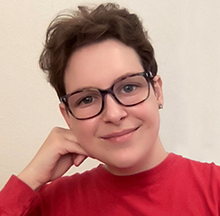Career Development
LinkedIn is an essential resource for networking, professional development, and searching for job opportunities. Read below for more information on the vital parts of using LinkedIn and how to connect with our new Graduate Division LinkedIn page.
What is LinkedIn?
LinkedIn is an online platform where professionals can update information about their careers and network with other professionals or potential employers. Like other social media platforms, users create a profile, which they can fill with information about their accomplishments and life events to share with a growing network of connections. Professionals can also see job boards through organizations, save searches for open listings, and even connect with alumni from their academic institutions through the UCSB institution page or the Graduate Division LinkedIn page. LinkedIn is a free forum, although there is a premium version for a fee.
How can LinkedIn help graduate students?
LinkedIn can be a productive place to connect with professionals, including Alumni, fellow academics, industry professionals, and future employers. These connections can be an excellent resource for informational interviews, career tips, and figuring out the next steps. Using LinkedIn’s search feature and filters, users can also locate jobs, events, and organizations that may be hiring. Once a professional’s network is more developed by actively messaging and making connections, the main page of LinkedIn also becomes a professional social media feed filled with regular announcements. Users can comment on posts by other members and organizations, share news, and write articles. Using LinkedIn effectively, graduate students can have a single location to message colleagues and actively explore or showcase their career interests and professional development. A user’s profile becomes a living CV, which can be updated and curated using descriptions, links, and photos.
Is LinkedIn useful? How many people are using it?
An article from February 2024 noted that there are 14 million jobs listed on Linked In, while 97% of human resources and other staffing professionals use LinkedIn to recruit candidates. Higher education, the tech industry, and financial services utilize LinkedIn more than any other industry, with the United States boasting the highest number of users (followed by India, China, and Brazil). Moreover, those with a complete LinkedIn profile (see below for some tips) have a 71% higher chance of receiving an interview than their competitors. LinkedIn estimates that its interface will have over a billion users and expects a 150% increase in job postings by 2025. Although cultivating your materials for each job is extremely important, creating a solid baseline with LinkedIn can make your application stand out.
How do I get started with LinkedIn?
Create an account. Accounts are free, although it is recommended that you make one well before entering the job market. Premium accounts have more messaging abilities and can have a ‘verified’ status.
Choose a professional profile picture. This should be a clear picture of you, preferably wearing professional attire and without a busy background.
Compose a profile headline. This should be succinct and relate directly to your professional interests. Dynamic headlines may include action verbs and can be updated depending on the job descriptions you are applying for.
Add your current and previous schools to your profile. This will help the LinkedIn algorithm find connections for you.
Write an About Me. This should describe your experience and goals. The ‘About Me’ is longer than the headline but should still be targeted toward your professional aspirations. Pay special attention to the first few lines, as not every viewer may choose to click to read more.
Use keywords from the jobs you want. When recruiters search for potential job candidates, they use particular words or phrases to find suitable potential matches. Try to naturally integrate these essential words and phrases into your profile so your page appears higher in the search results.
Create more than just a list of accomplishments. While many users list their jobs and skills on their profiles, fewer take the time to describe their roles. Pull from the bullet points on your resume to showcase the responsibilities of different positions and the significance behind your accolades. This will help other viewers have a better understanding of your skillset and how you may be able to fit a position.
Explore LinkedIn Learning. Use your UCSB netID and password to sign in to LinkedIn Learning, where you can gain thousands of new skills in various fields for free. Click here to learn how to connect your LinkedIn profile or create an account.
Connect with the UCSB Graduate Division LinkedIn Page. We will post helpful articles, stories, and job opportunities in the coming months. By joining this page you will be connected with UCSB graduate students and personnel who are interested in seeing you grow professionally!
Need help getting started? Utilize UCSB Career Services. Career advisors in the Graduate Student Resource Center are trained to help you edit your LinkedIn profile to fit your desired jobs. Make an appointment with us through Handshake to discuss your LinkedIn profile, job interviews, CVs, resumes, and cover letters.
Source Information:
50 LinkedIn Statistics Every Professional Should Know in 2024
How to Use LinkedIn Effectively
Top 10 LinkedIn Profile Optimization Strategies Revealed
About the Author:

Grace Kimball (she/her/per pronouns) is a doctoral candidate in the Department of Theater and Dance and a Graduate Career Peer Advisor at UCSB. She studies early modern English performance behaviors and faith and helps undergraduates learn about theater and performance studies in her classroom. Grace is also available for her graduate student colleagues through appointments on Handshake to discuss CVs, cover letters, resumes, interviews, and other job market materials.